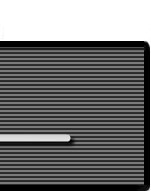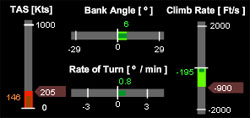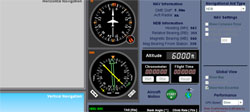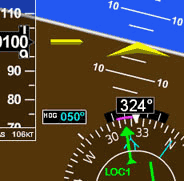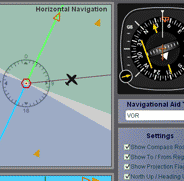Select desired Navaid type and settings. Drag aircraft on horizontal or vertical panels to change the aircraft's position in relation to the facility. If North Up is selected aircraft heading changes can be set by positioning the cursor close to the aircraft on the horizontal panel then clicking the button when a "-" or "+" appears. If Heading Up is selected, aircraft heading changes can be set by positioning the cursor close to the navigational facility on the horizontal panel then clicking the button when a "-" or "+" appears.
You can now use the keyboard to control the movement of the aircraft. The following are the keys that control the aircraft:
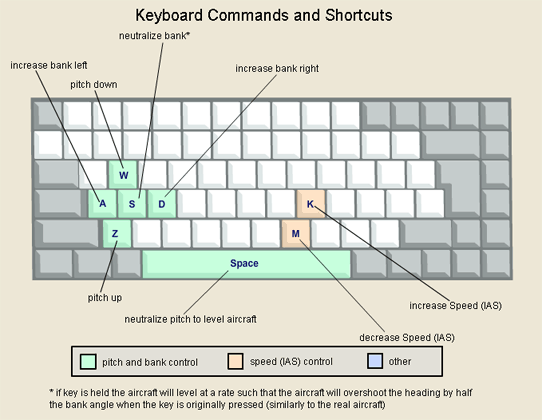
** if key is held the aircraft will level at a rate such that the aircraft will overshoot the heading by half the bank angle when the key is originally pressed (similarly to the real aircraft)
IMPORTANT KEYBOARD CONTROL NOTE: The simulator start button must be pressed and the aircraft rotating-arround-the-globe icon must be moving for the keyboard commands to work. In addition, if clicking outside the simulator (like clicking on the browser scroll bar, text or any other area outside) the browser may stop sending the keyboard commands to the simulator. You must click on any blank portion of the simulator to allow the browser to transfer keyboard commands to it. You can also still drag and reposition the aircraft even if it is moving.
When Heading Up is selected, even though it may seem that the aircraft rotates around the navigational facility, the aircraft remains in the same position when changing heading. The reason for this is that the display will always show the navigational facility in the center of the display. This means that regardless if North Up or Heading Up is selected the aircrafts position will always be relative to the navigational facility.
General Explanation of Features:
Compass Rose - Used as an aid to show the orientation of the Horizontal Navigation panel. It serves the same purpose as the compass rose symbol on IFR en route charts to show direction in relation to the magnetic north.
Horizontal Panel - Displays the horizontal position of the aircraft in relation to the navigational facility the same way an IFR en route chart or an approach plate's plan view would.
Vertical Panel - Displays the vertical position of the aircraft in relation to the navigational facility the same way an approach plate's profile view would.
Settings Section - Select and activate different feature such as setting wind, viewing wind triangle, zooming map and more.
NDB Information - Displays information such as magnetic heading, relative bearing, and more.
Performance - When using computers that that may be slower this section can be used to improve speed and processor usage by increasing preset parameters such as screen refresh rate and reducing size of the aircraft trace path. On faster
computers you can take advantage of having smoother animation and a larger trace path.
CAUTION: The behavior of the ADF and other information displayed is approximate for illustration purposes only.

